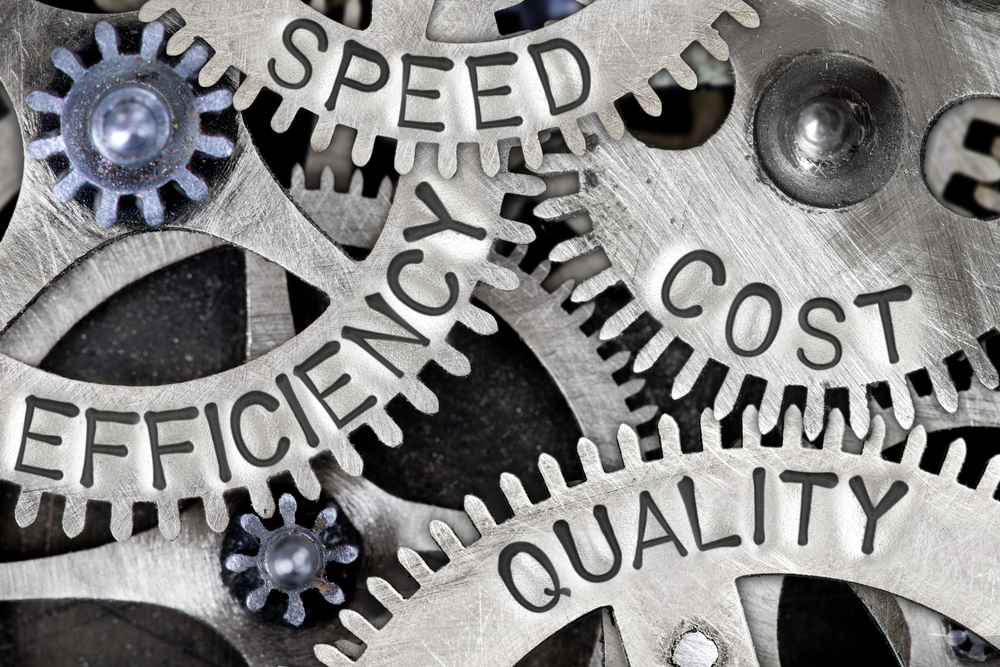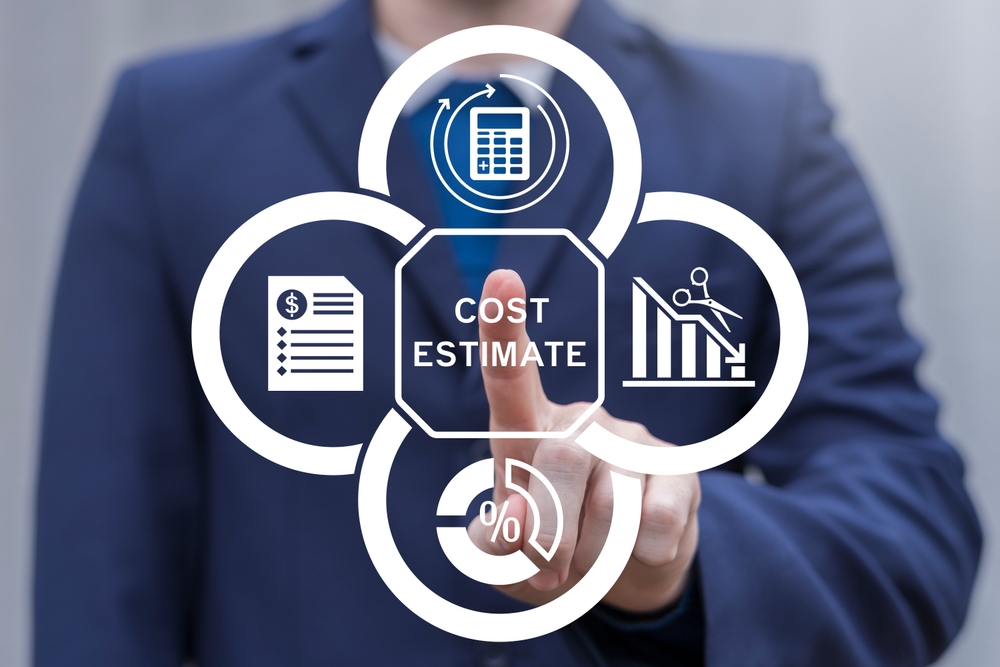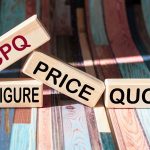
Many tools and cost estimation methods manufacturers use can make or break their company’s profitability margin. If cost estimates rely on legacy spreadsheets, static assumptions, or disconnected systems, they will likely result in underpricing, hidden waste, and lost opportunities.
To stay competitive, businesses must modernize their cost estimation tactics, refine product costing, and adopt process automation to align estimation with the realities of modern manufacturing practices.
The Problem with Outdated Cost Estimation Methods
Many manufacturers continue with cost models built on assumptions that no longer hold:
Static Inputs: Estimating based largely on average costs or past data, without accounting for real-time fluctuations in material prices, labor costs, or supply chain disruption. As Manufacturing Dive pointed out in a recent article, “cost plans remain anchored to static inputs, while variability is treated as an afterthought.”
Disconnected Systems: If engineering, procurement, production, and finance are working in silos, the programs won’t share a reliable database and a single source of truth.
Unmodeled Variability: Changes in commodity prices, labor shortages, delivery delays, design changes, etc., often aren’t built into early estimation. Estimates assume stability rather than planning for volatility. Manufacturers frequently plan as if nothing will change. Without modeling critical variables, costs are exposed to risk early in the process.
If these situations are part of your cost estimation methods, your pricing will lead to quotes that are too low (eating margin), too high (losing bids), or a surprise down the road as production starts.
Why Accurate Product Costing Matters

“Product costing” is not just a buzzword. It’s the discipline of knowing exactly what it takes to produce a product. It is not just materials and direct labor, but overhead, engineering changes, scrap, transport, tooling, and the hidden costs that often slip through when estimation is weak.
When product costing is inaccurate:
- Budgets misalign with reality.
- Margins vanish in rework, waste, and cost overruns.
- Leadership cannot make good decisions about pricing, product strategy, or investment.
When it’s done right:
- You can see how design decisions affect cost early (e.g., using alternative materials or adjusting tolerances).
- You can model “what-if” scenarios (what if steel goes up 15%, what if labor downtime increases, etc.).
- You gain visibility into cost drivers, leading to continuous improvement and better margin protection.
The Role of Process Automation & Frontier ERP in Cost Estimation and Beyond
Modern process automation is critical in turning product costing from guesswork into a strategic asset. Using an ERP system like Frontier—with its finance module and integrated data flows—can significantly enhance cost estimation accuracy, response time, and ultimately, profitability.
Here’s how:
| Feature | How Outdated Methods Fail | The Frontier ERP + Process Automation Fix |
|---|---|---|
| Real–Time Data Integration | Material costs, labor rates, and overhead are manually updated (if updated at all). Spreadsheets may use old numbers. | Frontier ERP’s finance module pulls in current procurement pricing, labor cost changes, and overhead allocations automatically. When market or supplier conditions change, estimates reflect that. |
| Unified System Across Teams | Engineering, production, procurement, and finance use different tools, creating data silos. Estimates aren’t reconciled; assumptions differ. | With Frontier ERP, these functions work from a single source of shared data. That way, everyone is aware of the impact of each department’s contribution to finalizing the product cost. |
| Scenario Modeling and What‑Ifs | Outdated models often assume “best case” or “average” and treat deviations as catastrophes rather than variables. | Automation allows you to model multiple scenarios automatically: shifts in commodity prices, labor shortages, delivery delays, etc. Frontier ERP enables finance and operations to run what‑if costing, compare alternatives. |
| Continuous Feedback & Learning | Estimates are created once, often never revisited; errors repeat. | Frontier’s finance module can capture actual costs post‑production and compare with estimates; this is useful for future product costing and improves estimation accuracy. |
Frontier ERP’s financial management module is especially relevant here. It structures the flow of financial data—costs, overhead, variances, actual vs. planned—so that estimation and costing are not separate tasks but parts of a continuous loop. This reduces unanticipated cost overruns: as Manufacturing Dive noted, “for years, manufacturers have leaned on the supply chain as a scapegoat … what is new is the urgency to build estimation systems that can anticipate it, instead of just reacting to it.” (manufacturingdive.com)
Putting It Together: A Strategy for Modernizing Estimation & Product Costing with Frontier ERP
Here are steps your company can take to realign its estimation methodology, costing, and finance under a more modern, automated system:
Baseline Your Current Estimation Accuracy
Measure how far off past estimates were compared to actual costs. How often did product costing miss the mark? Manufacturing Dive reports that “52% of manufacturers say their initial estimates miss the mark. Just 17% are very confident in the accuracy of those estimates.”
Identify Key Cost Drivers & Variables
Look at what changes most often or causes the biggest cost swings: raw materials, labor, freight, supplier lead times, and design changes. These are what you need to automate or model more precisely.
 Implement Integrated Estimation Tools
Implement Integrated Estimation Tools
Use Frontier ERP’s modules and extensions to ensure that measuring tools are tied directly to procurement, production, and finance data. Assumptions (e.g., labor rates, material costs) should be dynamic and visible to all stakeholders.
Use Scenario Planning / Parametric Modeling
Build estimation models that allow for variable inputs. For example, simulate what happens to product costing when steel prices go up 20%, or if labor availability drops. With Frontier ERP, these scenarios can be compared easily, and decisions made proactively.
Automate Feedback Loops
Once a product is made, feed actual costs back into the ERP system. Compare with estimates, capture causes of variance, and use that data to refine future estimates.
Make Estimation & Costing Core to Finance & Leadership
Elevate estimation from a support activity to a strategic competency. With Frontier ERP’s finance module, leadership can view cost vs. profit across product lines, design options, and customer quotes, enabling better pricing, investment, and growth decisions.
Conclusion
Outdated cost estimation methods aren’t just an inconvenience; they’re a direct threat to profitability. When estimates are based on static assumptions, disconnected systems, or incomplete data, manufacturers face undercut margins, lost bids, and costly surprises during production.
When accurate product costing is supported by real-time data and integrated with finance, engineering, and operations, it is the foundation for sustainable growth. By embracing process automation through Frontier ERP and its finance model, manufacturers can stop playing a risky guessing game.
The manufacturers who modernize today will not only protect their margins but also gain the confidence, agility, and insight needed to thrive in an unpredictable market. Would you like to learn more about how Frontier ERP can assist with your product costing? Let us know!


 Implement Integrated Estimation Tools
Implement Integrated Estimation Tools

